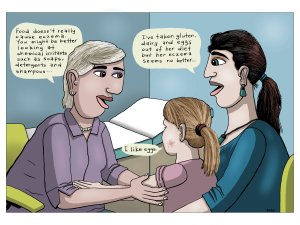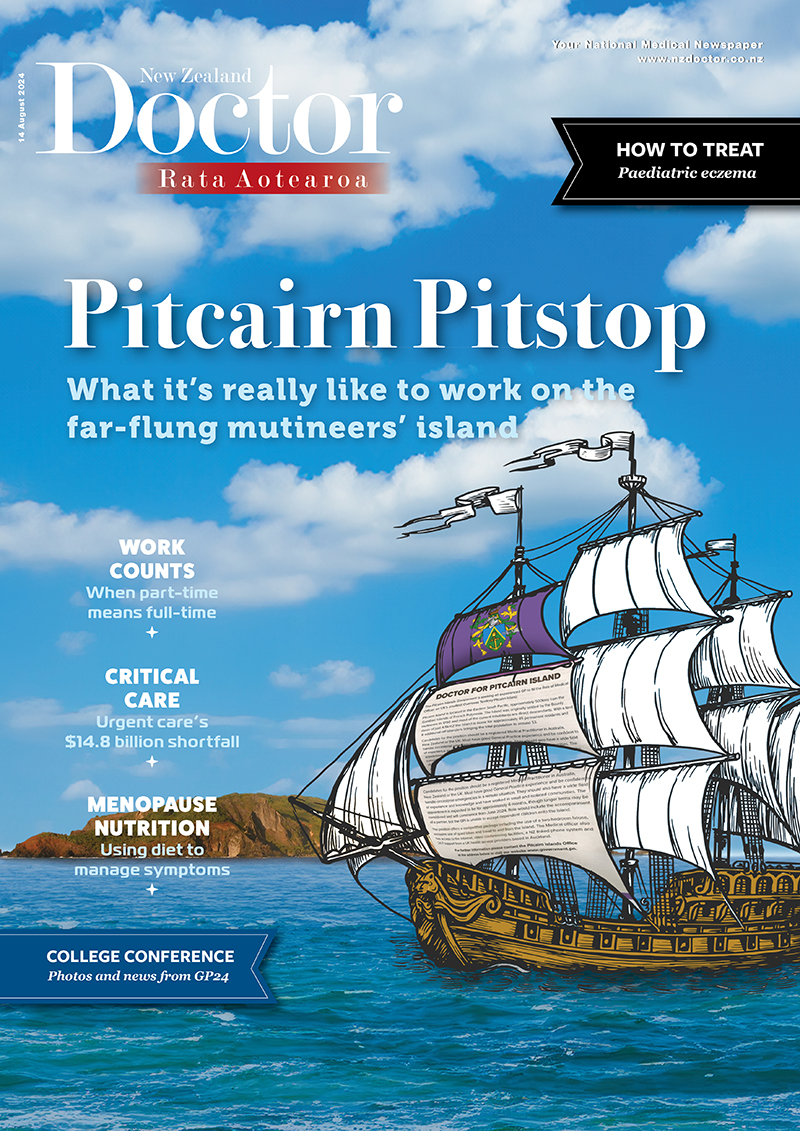Specialist GP Nikki Vadgama provides some tips to make your next paediatric eczema consult easier. She includes a review of new guidelines, resources, websites and medications for paediatric eczema management
A Stocktake of New Zealand’s Housing: Key findings and the Government’s solutions
A Stocktake of New Zealand’s Housing: Key findings and the Government’s solutions
Key findings:
o Homelessness or severe housing deprivation increased significantly between the past two Censuses; affecting one in 120 people in 2006 and rising to one in 100 in 2013.
o There is likely to be a significant number of homeless households not on the waiting list for public housing but the scale of this hidden homelessness is unknown.
o That is because no data is collected on this “floating population” – homeless who don’t or can’t access government housing assistance or are turned away from community agencies already at full capacity.
o Data from community emergency housing providers in 2017 indicated for every 10 homeless people who approached them, eight or nine were turned away.
o Media attention and the provision of some new services since mid-2016 has revealed a significant number of hidden homeless. This number is likely to keep increasing as the new Government ramps up this work and the homeless gain confidence to come forward for assistance.
The Government’s solutions:
· MSD has been asked to step up its work securing further transitional housing places in the lead up to winter.
· Officials are now investigating a new system for recording and monitoring the number of homeless.
· The Government supports, and is looking to scale up, a Housing First approach to find permanent solutions for the homeless.
· The Government is committed to increasing the stock of public houses.
· MSD is working to complete the rollout of 2,155 transitional housing places across New Zealand by mid-2018. As at 31 December 2017 there were 1,901 transitional housing places secured for tenanting – 799 of those in Auckland.
· There has been a significant increase in the number of transitional housing places being secured; with 1,138 places secured since May 2017.
Key findings:
o The proportion of people in state housing compared with private rentals changed significantly between 1991 and 2013, with those in the private sector rising from 60% to 83%. For Māori the proportion renting privately rose from 41% to 77%, and for Pasifika from 27% to 56%.
o This rise appears to be fuelled by the decrease in state housing stock and changes to policies designed to move people out of state housing.
o Terminating a state tenancy can have serious consequences and these former tenants are at risk of becoming homeless because they are likely to find it difficult to rent in the private sector.
The Government’s solutions:
· The Government is committed to increasing the stock of public houses and will work collaboratively with councils, iwi, community housing providers and private developers.
· Housing NZ has a new, more compassionate approach to supporting tenancies. This includes treating meth contamination as a health issue, not an automatic case for eviction.
· In Auckland, Housing NZ is undertaking its largest development programme for decades which will deliver almost 11,500 new state houses and 12,800 new affordable and market homes by 2026.
Key findings:
o Renting is less affordable than it was in the 1980s but is masked by increasing overcrowding and state assistance through the Accommodation Supplement and Income Related Rent Subsidies.
o Transience has major health, educational and social costs which recent housing policy has failed to address.
o Children in rental accommodation are more likely to be hospitalised, especially for diseases linked to housing, more likely to be re-hospitalised and more likely to die young. Diseases labelled ‘housing sensitive’ by the Ministry of Health result in 6000 children being admitted to hospital every year. These children are 3.6 times more likely to be re-hospitalised and 10 times more likely to die in the following 10 years.
o A BRANZ House Condition Survey of 560 houses assessed 32% of rental properties being ‘poorly maintained’ compared with 14% of owner-occupied housing.
o There are few incentives for landlords to have fixed-term tenancy agreements which leaves tenants with little security, and there are no effective protection against frequent six-monthly rent increases.
o The numbers of people receiving both Superannuation and the Accommodation Supplement is growing by 2000 a year. There is a growing risk of more and more older people living in housing-related poverty, mainly because Superannuation levels assume mortgage-free homeownership amongst the over 65s.
The Government’s solutions:
· The Government passed the Healthy Homes Guarantee Act in its first 100 days in office. It sets standards for rental housing around heating, insulation, ventilation and moisture.
· A targeted review of the Residential Tenancies Act will be carried out this year to look at changes to make life better for renters. It will consider banning letting fees and limiting rent increases to once per year.
· KiwiBuild will increase the supply of housing and end the shortage that is driving rents up.
Key findings:
o Home ownership rates have fallen to the lowest levels in 60 years.
o House price inflation over the past five years has been around 30% nationally while incomes have risen by about half that rate.
o Pasifika suffered the greatest decline in home ownership between 1986 and 2013 – a fall of 34.8%.
o Māori and Pasifika children have been worst affected by falling homeownership rates.
o The proportion of older people living in a mortgage-free house has fallen from 86% to 72%.
The Government’s solutions:
· KiwiBuild will deliver a step change in New Zealand’s housing system by delivering 100,000 affordable, quality homes over the next decade, half of which will be in Auckland.
· The Government is also investigating shared equity schemes as a way of making KiwiBuild accessible to a bigger group of home buyers.
· The National Construction Pipeline Report 2017 found housing construction will peak at 34,500 in 2019 and won’t meet the housing shortfall. KiwiBuild will build thousands more affordable new homes to meet the demand.
Key findings:
o Population growth outstripped housing stock growth by 2.1 per cent between 2012 and 2017 resulting in the housing shortage.
o Net migration has ballooned from 32,853 over the five year period between 2007 and 2012, to 262,762 between 2012 and 2017.This has particularly impacted Auckland which is growing at a rate of 40,000 a year.
o Over the last decade Auckland has accounted for 30 per cent of new dwelling consents but received 47 per cent of New Zealand’s population growth.
o The construction industry and land development sectors have hindered housing affordability, probably because of misguided or indifferent government policies.
o The average construction cost of an average house – rather than apartment – has risen by 28% in the past five years, and by 180% over the past 20 years.
o Infrastructure development often creates a bottleneck, made more problematic by increasing debt faced by local councils. Auckland Council accounts for more than half local government debt at around $8.3 billion.
o Urban planning is key to unlocking land supply, allowing for higher density, so more houses can be built.
The Government’s solutions:
· KiwiBuild will provide scale and certainty to the industry to help develop new innovative approaches to building houses, and ensure KiwiBuild homes are built in an efficient and effective way.
· The Government will work with the private sector, establish a home building programme and establish large-scale urban development projects.
· The Government will also explore innovative ways to finance infrastructure for developments including infrastructure bonds.
Key findings:
o Māori homeownership declined to 28% in 2013 compared to 57% for Europeans.
o In 1986 around half of Māori and Pasifika children lived in owner-occupied dwellings, but by 2013 only 38.5% of Māori children and 28.4% of Pasifika children lived in a dwelling the household owned.
o Rates fall even further for children under the age of one with just one-third of Māori babies and one-quarter of Pasifika babies living in owner-occupied dwellings.
o Māori face challenges to build on multiply-owned land including the developing infrastructure, accessing finance and planning rules.
The Government’s solutions:
· The Government is committed to working with hapü, iwi and Māori groups to ensure Māori have fair and equal access to housing and opportunities for home ownership.
· KiwiBuild will help more Māori realise the dream of homeownership.
· The Residential Tenancies Act review will improve the wellbeing of many renting whanau.




